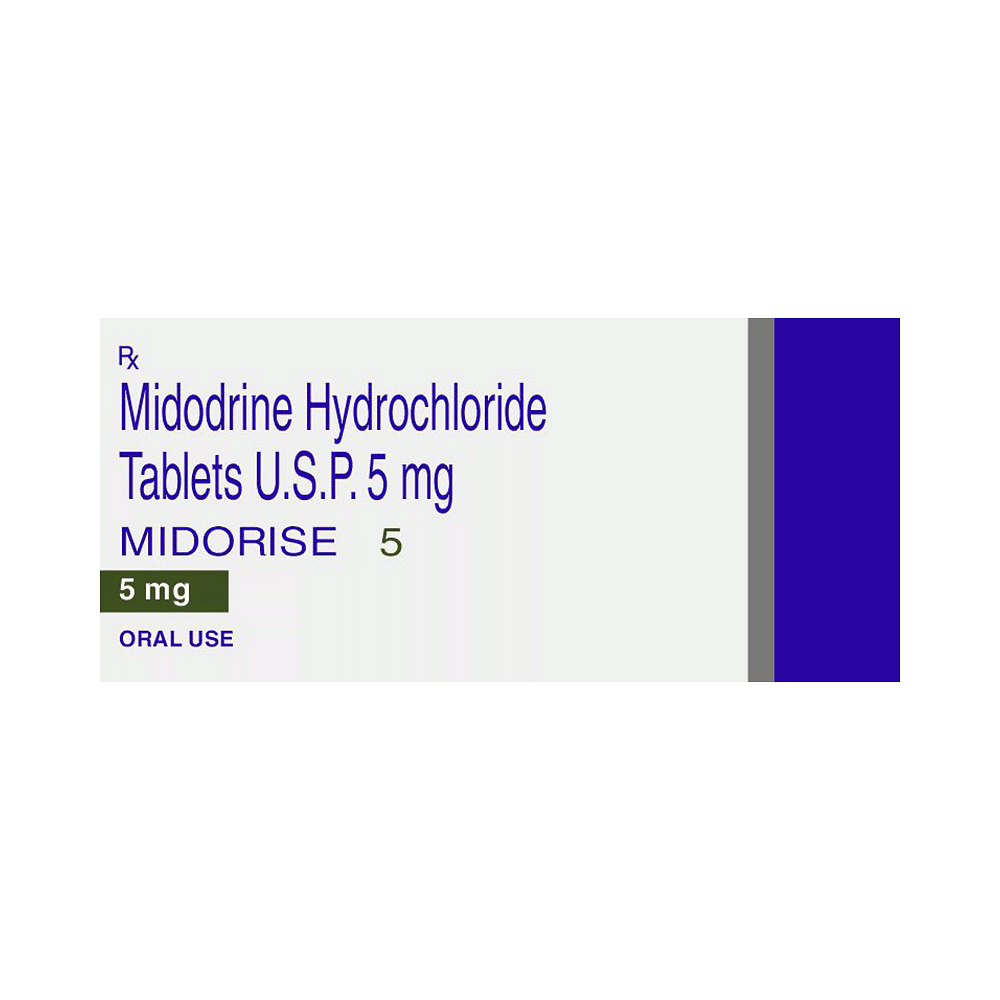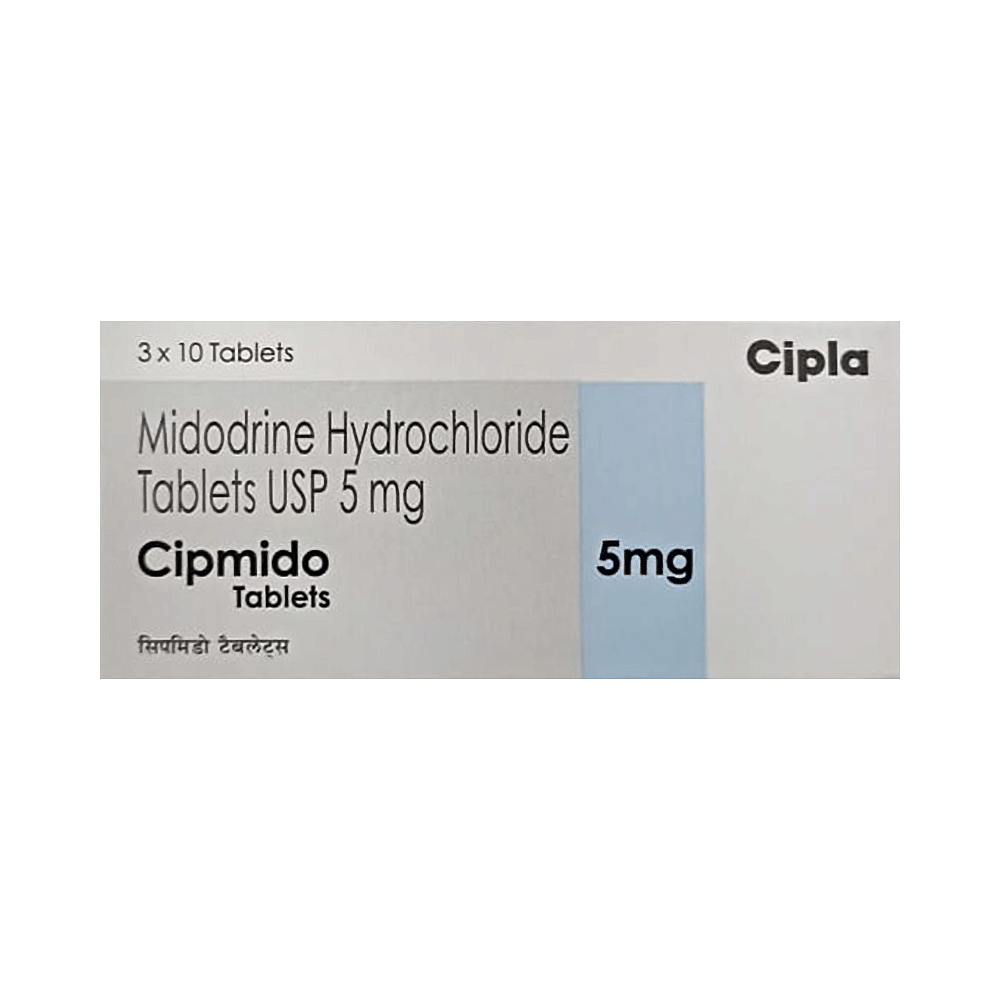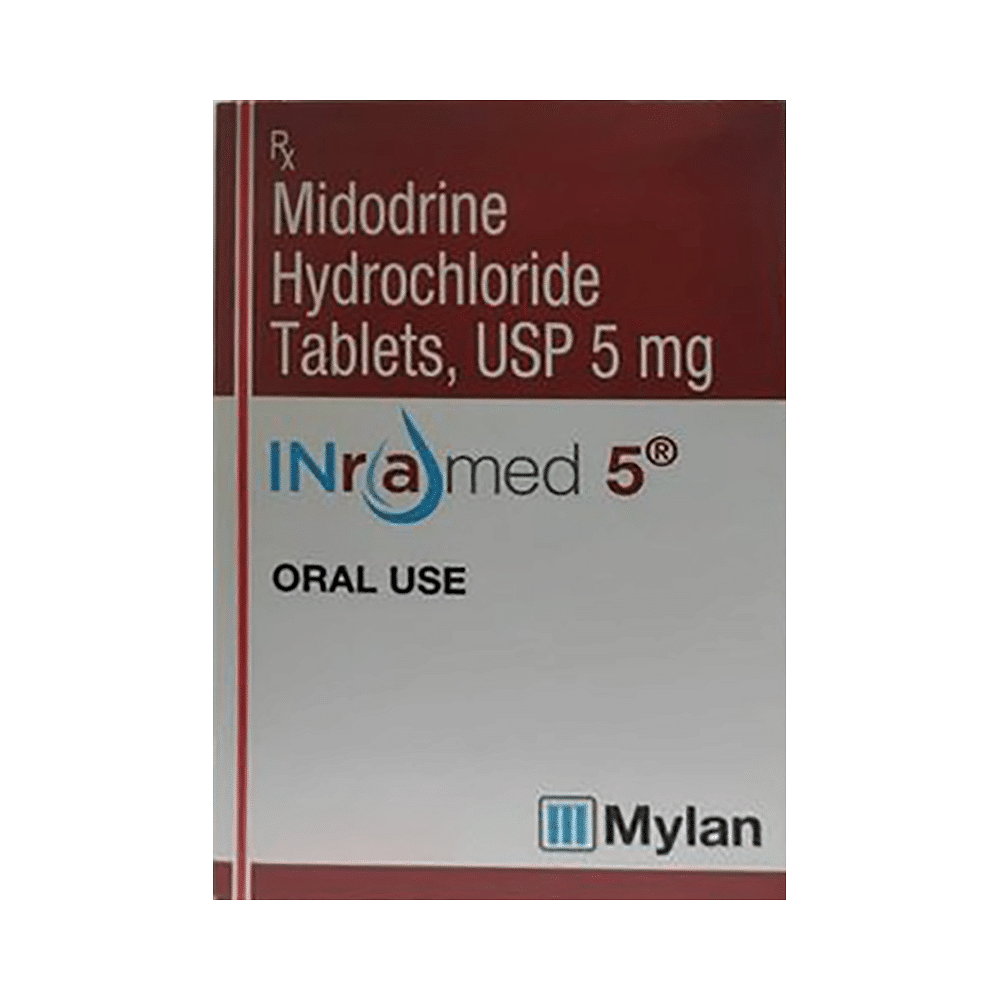
Aladrine Tablet
Manufacturer
Waterley Pharmaceuticals Pvt Ltd
Salt Composition
Midodrine (5mg)
Key Information
Short Description
Aladrine Tablet is used to treat low blood pressure (hypotension) in patients who experience dizziness due to low blood pressure while standing up suddenly from sitting or lying position.
Dosage Form
Tablet
Introduction
Aladrine Tablet can be taken with or without food. This medicine is taken during daytime hours when people stand most often. But it should not be taken if you are going to lie down for a long time after the dose. You should always take this medicine as advised by the doctor and should never stop it without consulting the doctor. You should monitor your blood pressure regularly while taking this medicine. Common side effects of this medicine include headache, nausea, rash, urinary retention, difficulty in urination, and flushing. It may also cause supine hypertension, which is an increase in your blood pressure while lying down. Consult your doctor if these side effects bother you.
Directions for Use
Take this medicine in the dose and duration as advised by your doctor. Swallow it as a whole. Do not chew, crush, or break it. Aladrine Tablet may be taken with or without food, but it is better to take it at a fixed time.
Safety Information
Side Effects
headache nausea rash urinary retention difficulty in urination flushing supine hypertension
Alcohol Warning
It is not known whether it is safe to consume alcohol with Aladrine Tablet. Please consult your doctor.
Breastfeeding Warning
Aladrine Tablet is probably unsafe to use during breastfeeding. Limited human data suggests that the drug may pass into the breastmilk and harm the baby.
Pregnancy Warning
Aladrine Tablet may be unsafe to use during pregnancy. Although there are limited studies in humans, animal studies have shown harmful effects on the developing baby. Your doctor will weigh the benefits and any potential risks before prescribing it to you. Please consult your doctor.
How it works
Aladrine Tablet is an alpha-adrenergic agonist. It works by activating specific receptors on blood vessels. This causes the blood vessels to tighten, which increases blood pressure.
Quick Tips
Take Aladrine Tablet at least 4 hours before bedtime to avoid the risk of high blood pressure at night time. Monitor your blood pressure regularly while taking this medicine. Inform your doctor if you have a history of prostate disorder or blood circulation problem. Inform your doctor immediately if you notice symptoms of chest pain, palpitations, headache, shortness of breath, and blurred vision. Inform your doctor if you are pregnant, planning pregnancy, or breastfeeding.
Related Medicines

Midorise 5 Tablet

Xidorin 5 Tablet

Midotab 5mg Tablet

Midgeo 5mg Tablet

Cipmido 5mg Tablet

Midocan 5mg Tablet

Gutron 5mg Tablet

Midohep 5mg Tablet

Inramed 5 Tablet

Cipmido 5mg Tablet
Frequently asked questions
What are the potential effects on blood pressure when taking Aladrine Tablet?
Aladrine Tablet may cause high blood pressure when lying flat on one's back (supine hypertension). It should only be used by individuals with low blood pressure that affects their daily life and in those who could not be treated successfully with other therapies.
Can Aladrine Tablet affect heart rate?
Aladrine Tablet may slow down the heart rate slightly. It is essential to use it cautiously when combined with medications like beta blockers or digitalis, which can further slow down the heart rate. Monitor your pulse and report any symptoms suggestive of slow heart rate to your doctor.
Why should I not lie down after taking Aladrine Tablet?
You should avoid lying down immediately after taking Aladrine Tablet due to the risk of supine hypertension (high blood pressure when lying flat on one's back). Take the last daily dose at least 4 hours before bedtime, and elevate your head to reduce the risk of this condition occurring during the night.
How long does it take for Aladrine Tablet to show its effects?
Aladrine Tablet takes approximately 1 hour to become effective, with a duration lasting around 2-3 hours.
How should I take Aladrine Tablet?
Take Aladrine Tablet exactly as directed by your doctor. You can consume the tablet orally with or without food. Swallow the entire tablet with water, usually taking it three times a day (morning, midday, and late afternoon) with a gap of at least 3 hours between doses. Take the last daily dose before an evening meal and at least 4 hours before bedtime.
Who should not take Aladrine Tablet?
Aladrine Tablet is not recommended for individuals with allergies to its components, severe heart disease, unusually slow heart rate, high blood pressure, or conditions causing artery constriction. Additionally, avoid treatment if you have an enlarged prostate gland, urinary retention, pheochromocytoma (a tumor in the adrenal medulla), acute or severe kidney disease, overactive thyroid, poor vision due to diabetes, or narrow-angle glaucoma.
What monitoring is required during Aladrine Tablet treatment?
You may need to check your blood pressure and get kidney and liver function tests done before starting treatment. Once you begin taking Aladrine Tablet, keep track of your blood pressure and heart rate, especially after lying down.
How will I know that I have developed supine hypertension?
Symptoms of supine hypertension include chest pain, palpitations, shortness of breath, headache, and blurred vision. If you experience these symptoms, inform your doctor immediately. They may reduce the dose of Aladrine Tablet or discontinue treatment if the symptoms persist.
Can I take metoprolol with Aladrine Tablet?
Using both Aladrine Tablet and metoprolol can cause a significant slow heart rate. Be cautious while using them together, and inform your doctor if you experience slow pulse, dizziness, or fainting, as the dose of these medicines may need to be modified.


